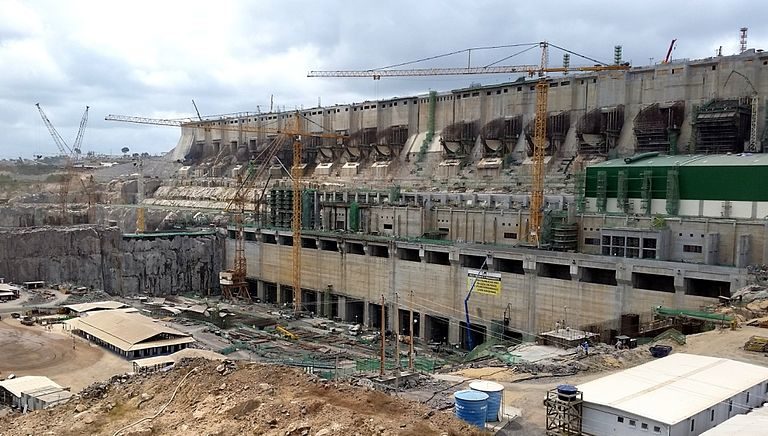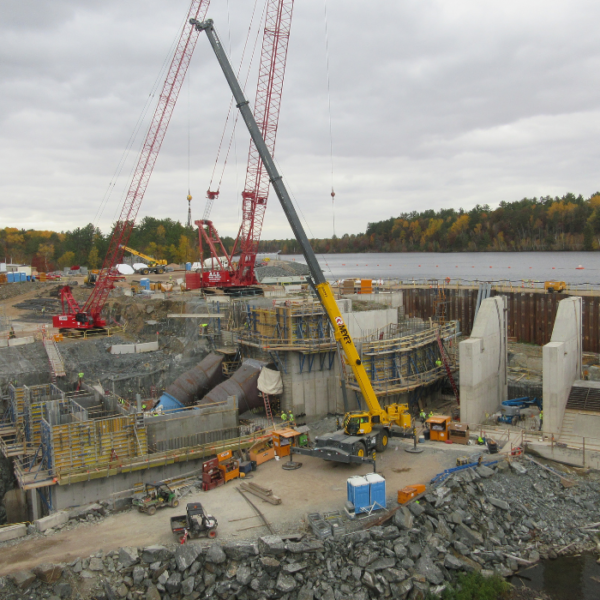Editor’s Note: On Sunday, August 7, the Senate passed the Inflation Reduction Act. Later that day, the group of House Democrats who had earlier indicated their opposition to passing a reconciliation bill without a repeal of the cap on SALT deductions announced they would support the IRA. The House will consider and likely pass the IRA on Friday, August 12. NHA will provide additional updates throughout the week.
Last Wednesday afternoon, Senators Chuck Schumer (D-NY) and Joe Manchin (D-WV) sent shockwaves across both Capitol Hill and the country when they announced reaching a deal on a reconciliation package, which is titled the Inflation Reduction Act of 2022 (IRA).
This dramatic piece of legislation addresses several of National Hydropower Association’s (NHA) tax priorities as parts of the $369 billion package of tax credits for the nation’s energy sector. The proposal contains important provisions for incremental new hydropower and new pumped storage, including:
- Investment certainty for incremental new hydropower generation by extending the recently expired credit for ten years
- New tech-neutral energy storage Investment Tax Credit for ten years
- Section 48C qualified advanced energy property credit, and allowing the Secretary to allocate an additional $10 billion in tax credits to qualifying projects
- Direct pay language, which allows organizations exempt from federal income tax to take advantage of the tax credit
Yet, the Inflation Reduction Act fails to address the maintenance needs of aging hydropower facilities.
The package must still pass through the Senate before moving onto the House, leaving the fate of the Inflation Reduction Act of 2022 to be determined.

WHAT’S IN IT FOR HYDROPOWER?
The proposal includes four important provisions for the hydropower industry. First, the package creates investment certainty for incremental new hydropower generation by extending the recently expired credit for ten years. Moreover, it puts the tax credit for hydropower on par with other renewable energy resources, like wind, in the Section 45 Production Tax Credit (PTC). Hydropower retrofits at existing non-powered dams and incremental increases in electricity generation at existing hydropower facilities, along with marine energy, would be eligible for this tax credit. The proposal still allows PTC eligible hydropower projects to “opt in” to the Section 48 Investment Tax Credit (ITC). The proposal also extends the beginning construction period through December 31, 2024, for hydropower projects to qualify for the Production Tax Credit. After 2025, the existing renewable energy tax credits transition to technology-neutral clean energy credits (both PTC and ITC) for any energy project or upgrade that generates electricity without creating greenhouse gas emissions and is placed in service after December 31, 2024.
Second, the proposal creates a new tech-neutral energy storage Investment Tax Credit for ten years. This provision will be a game changer for new pumped storage. The energy storage Investment Tax Credit applies to new energy storage projects or capacity upgrades at existing energy storage projects with a capacity greater than 5 kilowatt hours. This tax credit lays the foundation for a much hoped for renaissance in pumped storage, the nation’s only long-duration energy storage technology.
The proposal also revives the Section 48C qualified advanced energy property credit, and it allows the Secretary to allocate an additional $10 billion in tax credits to qualifying projects, starting in 2023. In addition, it amends the language to specifically list “water” as a covered resource under the program. The credit will help U.S. hydropower manufacturers by supporting investments to establish, expand, or re-equip their own production facilities.
Finally, the Inflation Reduction Act contains “direct pay” language, which allows organizations exempt from federal income tax, any state or local government, the Tennessee Valley Authority, or any Alaska Native Corporation to take advantage of the tax credit. NHA pushed hard for all four provisions and is excited about their potential for the hydropower industry.
The Inflation Reduction Act also reflects Congressional Democrats’ efforts to use the tax code to further domestic policy priorities. To claim a full inflation adjusted 1.5 cent per kWh PTC or 30% Investment Tax Credit, energy projects must meet prevailing wage and apprenticeship requirements. Bonus tax credits are available for energy projects that are located in communities that will be hit hard by the transition to clean energy or which meet domestic content requirements.

WHAT WAS LEFT OUT?
Unfortunately, the Inflation Reduction Act fails to include the provisions championed by Senators Maria Cantwell (D – WA) and Lisa Murkowski (R – AK), to provide a 30% Investment Tax Credit for environmental, dam safety, and grid resilience upgrades at existing hydropower facilities. This proposal was included in the Senate Finance Committee’s $555 billion December reconciliation package, but it was cut out in an effort to bring the score of the proposal down from $555 billion to $369 billion.
As a result, the Inflation Reduction Act may inadvertently accelerate early retirements of hydropower by creating an uneven investment landscape. Without tax support to maintain and enhance existing hydropower, utilities may be pushed into building new tax-favored generation rather than maintain the existing hydropower fleet. NHA and the industry are actively working to address this issue as the legislation moves forward.

WHAT IS NEXT FOR THE INFLATION REDUCTION ACT?
Under Senate rules, 60 votes are required to end debate on legislative provision on the floor. Through reconciliation procedures, legislation can advance with only 51 votes (with Vice President Harris breaking a potential tie). In a 50-50 Senate, every Democrat needs to support the Inflation Reduction Act for it to pass the chamber. While Senator Manchin has provided his support of the package, at the time of the article, Senator Sinema (D–AZ) had not indicated whether she will support it. The proposal contains revenue raising language that she has previously opposed, so this may prove to be a hurdle when it comes to getting the bill through the Senate.
If the package does pass the Senate, then it needs to pass the House. Democrats have a tenuous grip on the chamber, holding 220 seats to the Republicans’ 211. That means Democrats can only afford to lose four votes in the House. A group of House Democrats from New York, New Jersey, and California indicated opposition to any reconciliation package that does not repeal a 2017 cap on state and local tax (SALT) deductions. While it is unlikely that these Democrats will stand in the way of the Inflation Reduction Act, which is President Biden’s major policy priority, unexpected and strange things happen in politics.
NHA urges lawmakers to pass the Inflation Reduction Act. If you have any questions, please email Will Pisano, NHA’s Director of Government Affairs at will@hydro.org.












